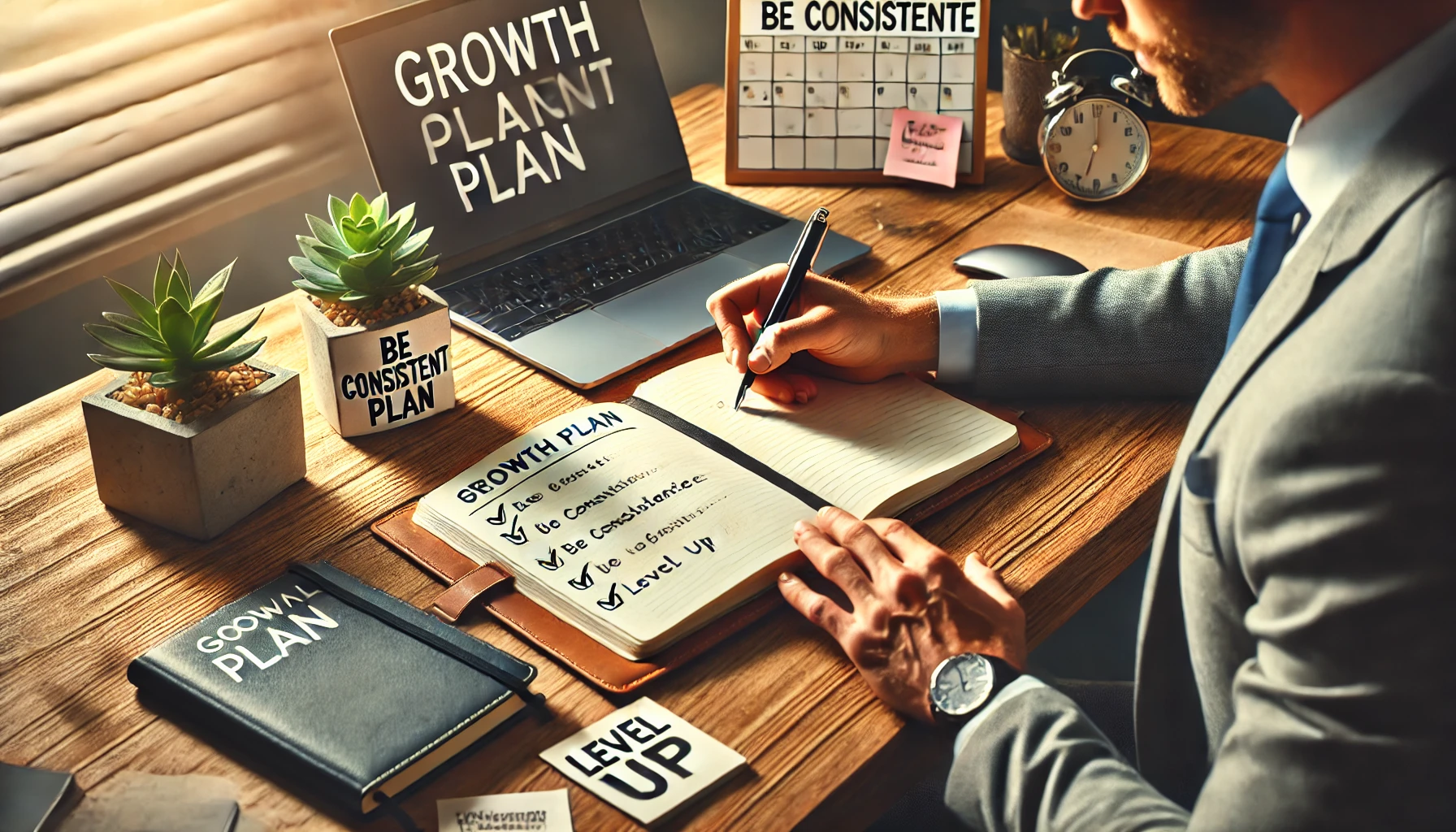You want to grow.
You want to get better.
You want to stop feeling stuck — and actually start moving forward.
But motivation alone won’t take you there.
You need a plan.
Not a wish list. Not a vague resolution.
A clear, intentional personal development plan that aligns with your goals, your values, and the kind of person you’re becoming.
In this article, you’ll learn how to build a personal growth roadmap that’s realistic, motivating, and easy to stick to — so you can stop drifting and start leveling up.
1. Define What “Growth” Means to You
Start with clarity:
“What does personal development actually look like for me right now?”
Ask:
- What do I want to improve in my work or life?
- Who do I want to become in the next 6–12 months?
- What habits, skills, or mindset shifts do I need to get there?
Growth isn’t one-size-fits-all. Make your plan personal.
2. Identify Key Focus Areas
Don’t try to “do it all.”
Choose 2–4 areas of focus that matter most right now. For example:
- Communication
- Time management
- Confidence
- Emotional regulation
- Leadership
- Health and energy
- Creativity
- Career transition
✅ Tip: Less = more. Focus builds momentum. Overload builds stress.
3. Set Specific, Measurable Goals
Vague goals = vague results.
Instead of:
- “Be more productive”
Say: - “Work distraction-free for 90 minutes each morning, 5 days a week”
Instead of:
- “Improve communication”
Say: - “Give one presentation this quarter and ask for feedback”
Use the SMART framework:
- Specific
- Measurable
- Achievable
- Relevant
- Time-bound
4. Break Each Goal Into Action Steps
Big goals feel overwhelming — until you break them down.
For each goal, ask:
- What’s the very first step I can take?
- What would I do next?
- What would progress look like this week?
✅ Example: Goal: Build confidence speaking in meetings
Steps:
- Speak up once per meeting
- Practice talking points beforehand
- Ask for feedback from a trusted peer
5. Schedule Time for Growth
Don’t just plan — put it on your calendar.
Block time for:
- Reading or learning
- Practicing new skills
- Reflecting on your progress
- Coaching or mentorship sessions
If it’s not scheduled, it’s not real. Growth needs dedicated time and space.
6. Track Progress Weekly or Monthly
Progress fuels motivation.
Ways to track:
- A growth journal
- A habit tracker
- A simple monthly review checklist
- A spreadsheet or Notion dashboard
Ask:
- What did I try or learn this month?
- What’s working?
- Where do I feel stuck — and why?
Awareness = power.
7. Adjust as You Go
Your plan isn’t set in stone. Life happens. Priorities shift.
Every month, review:
- What still matters most?
- What can I pause or let go of?
- What do I want to add or deepen?
The best plans grow with you — not against you.
8. Add Accountability and Support
You don’t have to grow alone.
Try:
- Sharing your goals with a trusted friend or mentor
- Joining a mastermind, group, or learning cohort
- Working with a coach or accountability partner
Progress multiplies when you’re not the only one tracking it.
9. Celebrate Small Wins
Every habit, insight, or moment of courage? It matters.
Celebrate:
- A day you followed through
- A meeting where you showed up differently
- A mindset shift you noticed mid-task
The brain thrives on reward. Momentum comes from stacking wins, not waiting for a final result.
10. Commit to Being the Kind of Person Who Grows
Personal development isn’t just something you do.
It’s part of who you are.
Decide:
“I’m someone who grows — even when it’s hard, slow, or messy.”
And then keep showing up.
Not perfectly. Not all at once.
But consistently, intentionally, and with curiosity.
That’s where real growth lives.
Build the Plan — Become the Person
Your personal development plan isn’t a checklist — it’s a commitment to yourself.
So get clear. Start small. Stay flexible.
And trust that your future self is being shaped by what you do today.
This is your blueprint.
This is your moment.
Let’s build it.
